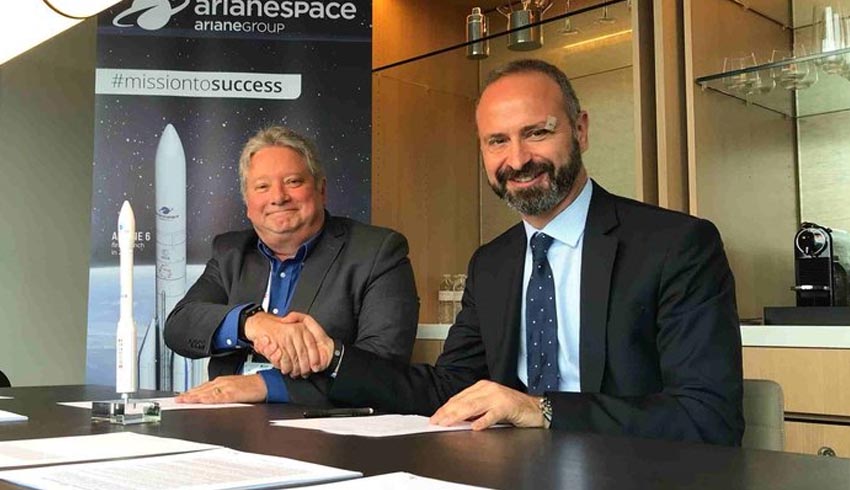
ESAIL is part of ESA’s Partnership Projects and has been developed to enhance the next generation of space‐based services for the maritime sector. The spacecraft will track ship movements over the entire globe as it orbits the planet.
Satellite coverage is essential, as about 90 per cent of global trade takes place on the oceans. It opens the door to enhanced safety, tracking ships and route provisions for industry, government and maritime authorities.
Ships of 300 tonnes or more in international voyages, cargo ships of 500 tonnes or more in local waters and all passenger ships irrespective of size are mandated by the International Maritime Organization to carry automatic identification system (AIS) equipment.
Peter Mabson, chief executive of exactEarth, welcomed the contract signing, saying, "We are looking forward to adding ESAIL to our industry-leading global maritime satellite constellation, which now consists of more than 60 in-orbit high performance satellite assets. The capabilities on ESAIL will allow us to continue to advance the state-of-the-art in maritime vessel tracking and data services, and will pave the way for future capabilities."
Terrestrial AIS antennas needs direct line of sight with the vessels, however, so the system is limited by the curvature of the Earth. Satellite automatic identification systems, or SAT‐AIS, have no such restrictions and can receive messages from ships on the open ocean, enabling authorities to follow vessels’ movements throughout their entire voyage.
"I would like to thank ESA and LuxSpace and their satellite manufacturing team for their accomplishments in producing this leading-edge microsatellite," Mabson added.
The ESAIL satellite is built by LuxSpace for the exactEarth constellation of AIS satellites, through an ESA Partnership Project, together with the Luxembourg Space Agency and other ESA member states.
ESAIL’s AIS receiver provides advanced antenna beamforming and ground signal processing capabilities. The satellite needs rigorous testing before launch to ensure it can provide this always‐on service.
Stephane Lascar, head of telecommunication satellite programmes at ESA, said, "ESA’s Partnership Projects offer the most appropriate scheme for private and public entities to de-risk investments and answer market needs. They maximise benefits to industry, thanks to ESA’s efficient co-management tailored to commercial practices."
The satellite flight model has completed its environmental tests in Centre Spatial de Liège in Belgium, where it was exposed to mechanical vibration testing, simulating the violence of a rocket launch, as well as to the extreme temperatures and vacuum simulating the near-Earth orbital environment.
"This maritime microsatellite built in Luxembourg by LuxSpace, in partnership with ESA and exactEarth, demonstrates how a private company and the European Space Agency can closely work together to develop a new commercial product. ESA has been a key partner in developing the technical skills needed to compete in a highly demanding commercial space market," Marc Serres, chief executive of the Luxembourg Space Agency, said.
ESAIL is a pioneering project for LuxSpace, which is also developing a multi‐purpose, modular platform called Triton‐X. Triton‐X will build on the manufacturing and testing heritage gained by LuxSpace through ESAIL, using New Space‐style off-the-shelf components to deliver a fully fledged satellite within months.
Receive the latest developments and updates on Australia’s space industry direct to your inbox. Subscribe today to Space Connect here.












